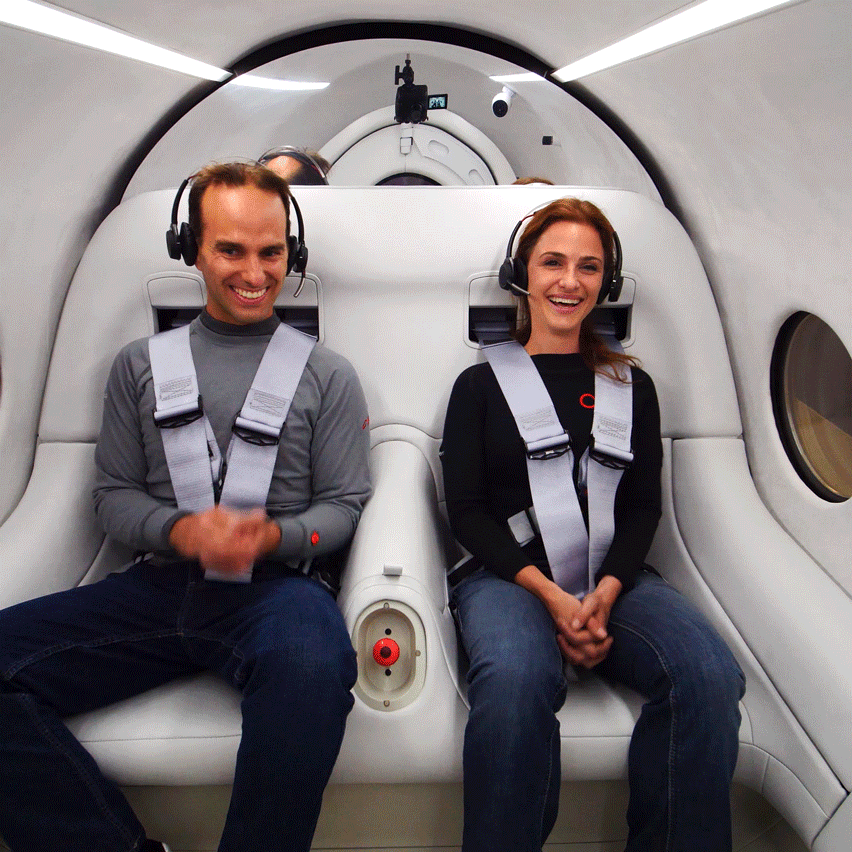
For the first time, two human passengers have travelled in one of Virgin's levitating hyperloop capsules, which was sent at 100 miles per hour through a near-airless tunnel in the Nevada desert.
Josh Giegel, CTO and co-founder of Virgin Hyperloop, and Sara Luchian, Virgin Hyperloop's director of passenger experience, were the two passengers to ride the new form of transportation for the first time on 8 November.
The 15-second-long test trip was carried out by the company at its DevLoop site 35 miles north of Las Vegas in Nevada, which comprises a 500-metre concrete tube located in a barren stretch of desert.
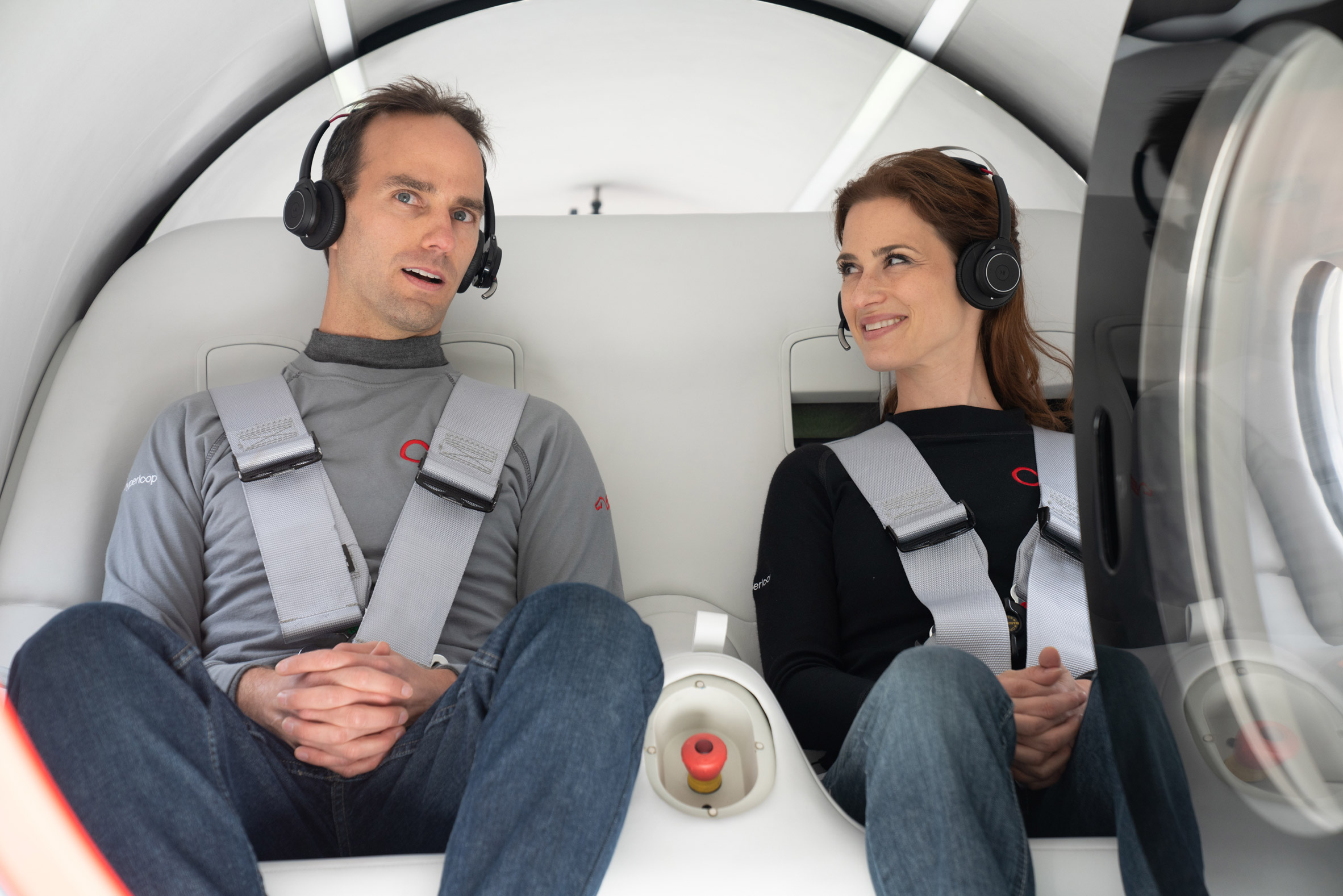
The maiden voyage took place in the newly released two-seater XP-2 vehicle, designed by Bjarke Ingels Group (BIG) and Danish studio Kilo Design, which was built to demonstrate that passengers are able to travel safely inside a hyperloop pod.
After the passengers were strapped into the capsule's plush white seats, an airlock system was used to bring the pod in and out of the semi-vacuum environment.
The XP-2 vehicle was then electromagnetically propelled through the tunnel at a speed just over 100 miles per hour (mph) before coming to a stop, with the journey lasting around 15 seconds.
When the system is fully realised, the singular capsule that Giegel and Luchian travelled in will be larger, able to seat up to 28 passengers, and will aim to reach speeds of up to 760 mph with a longer track.
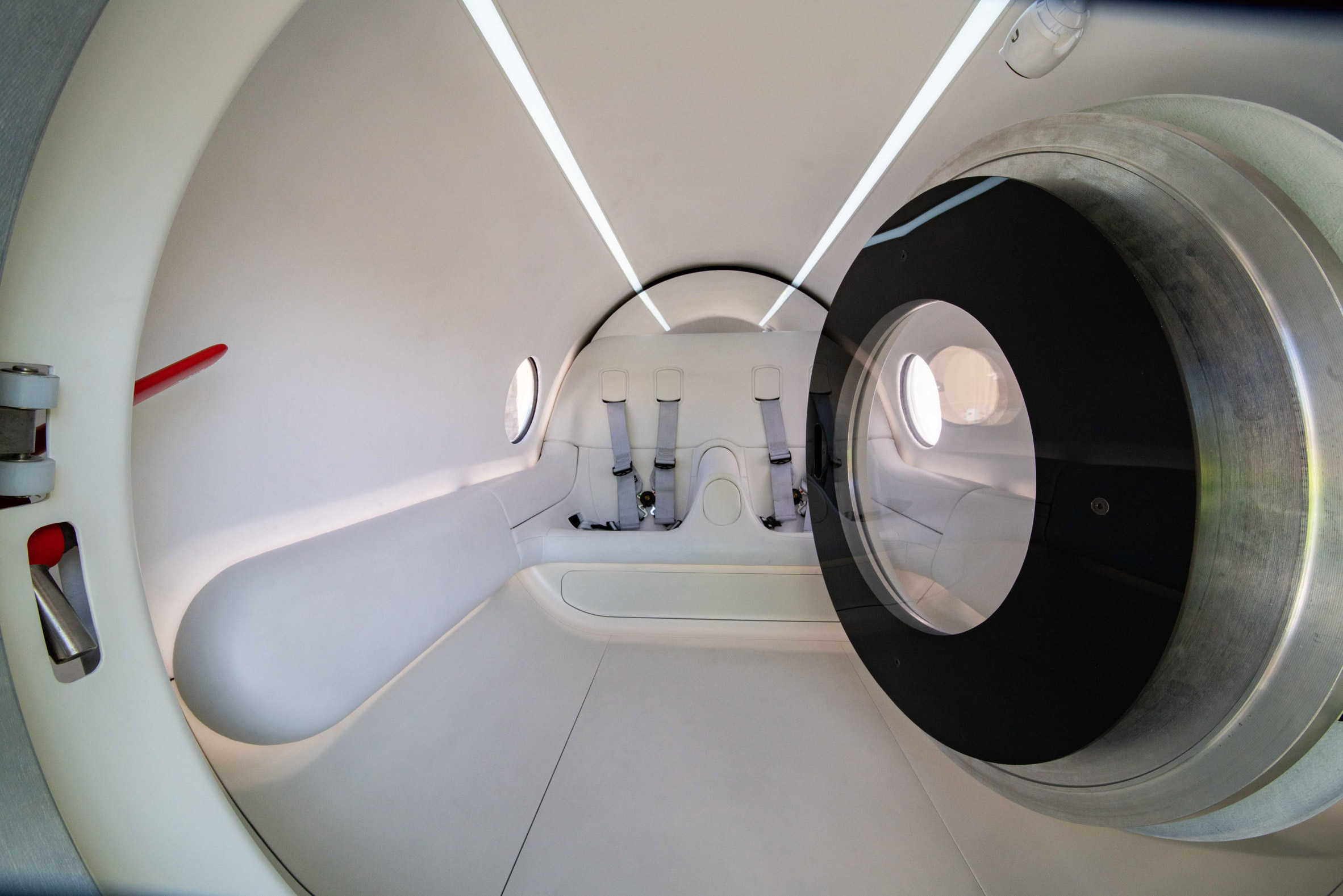
The system employs mag-lev — the same technology that is used by high-speed trains in Japan. The electromagnetic levitation of the train means there is no friction, unlike traditional trains that run on tracks.
The pod, which was nicknamed Pegasus for the test, is mounted on several wheels that retract as the magnetic levitation comes into force to avoid any drag.
Inside, a stepped floor allows for easy entry and exit, while circular windows grant views down the tunnel. These elements were designed to complement the pod exterior, which boasts a soft, pill-shaped form.
The extended armrests of the interior seats double up as storage for safety equipment, oxygen tanks and lighting.
"When designing the future of transportation and the slate is sort of blank, the opportunities are endless," said BIG's Jakob Lange. "We've needed to adjust our way of thinking away from the classic modes of transporting like trains, planes and metros, and towards a new vehicle typology, closest to that of a spaceship."
"Hyperloop allows passengers to get from A to B in a split second, and Pegasus provides the feeling of safety, convenience and a smooth journey," he added.
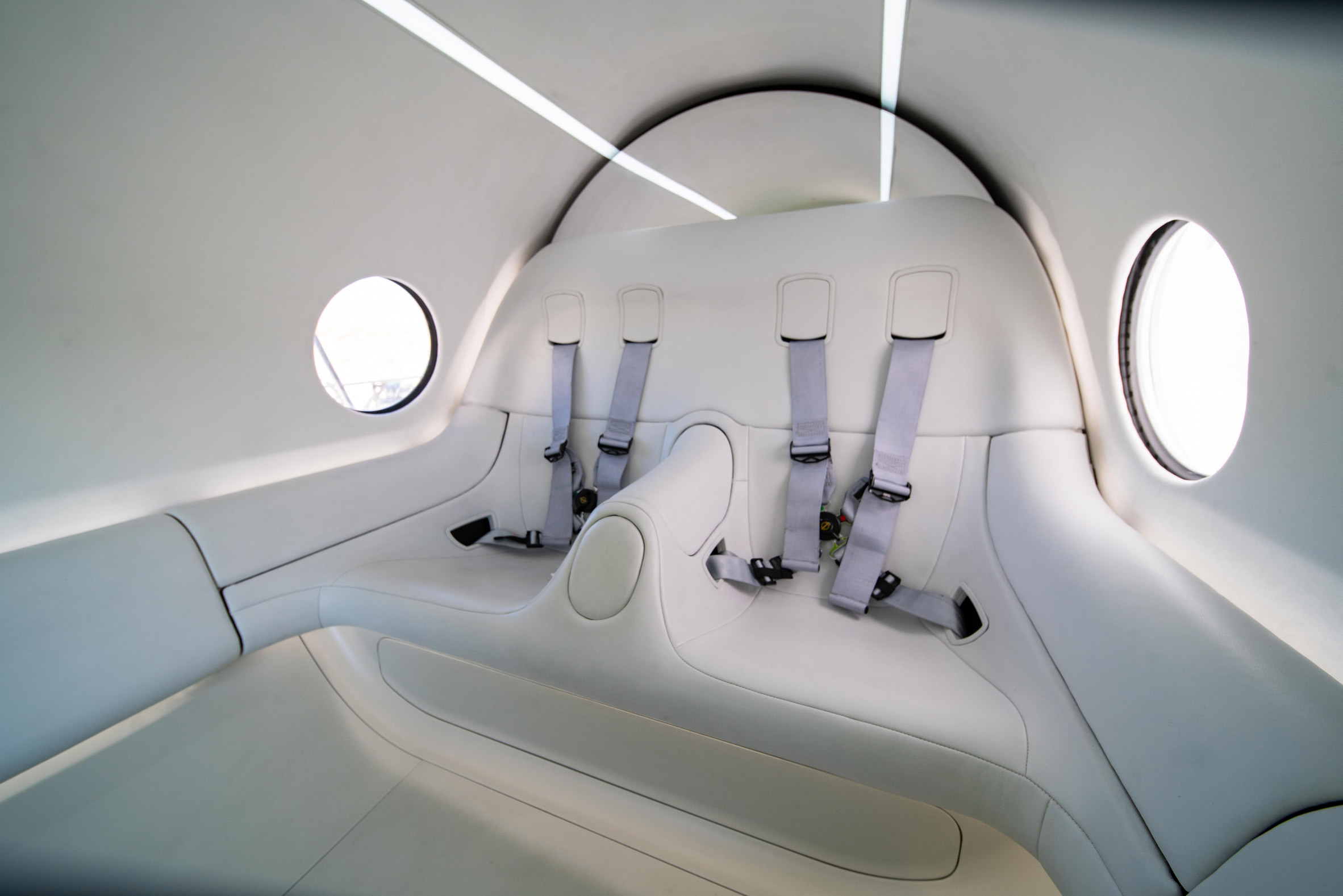
"When we started in a garage over six years ago, the goal was simple – to transform the way people move," said Giegel. "Today, we took one giant leap toward that ultimate dream, not only for me, but for all of us who are looking towards a moonshot right here on Earth."
"Hyperloop is about so much more than the technology. It's about what it enables," added Luchian. "To me, the passenger experience ties it all together. And what better way to design the future than to actually experience it first-hand?"
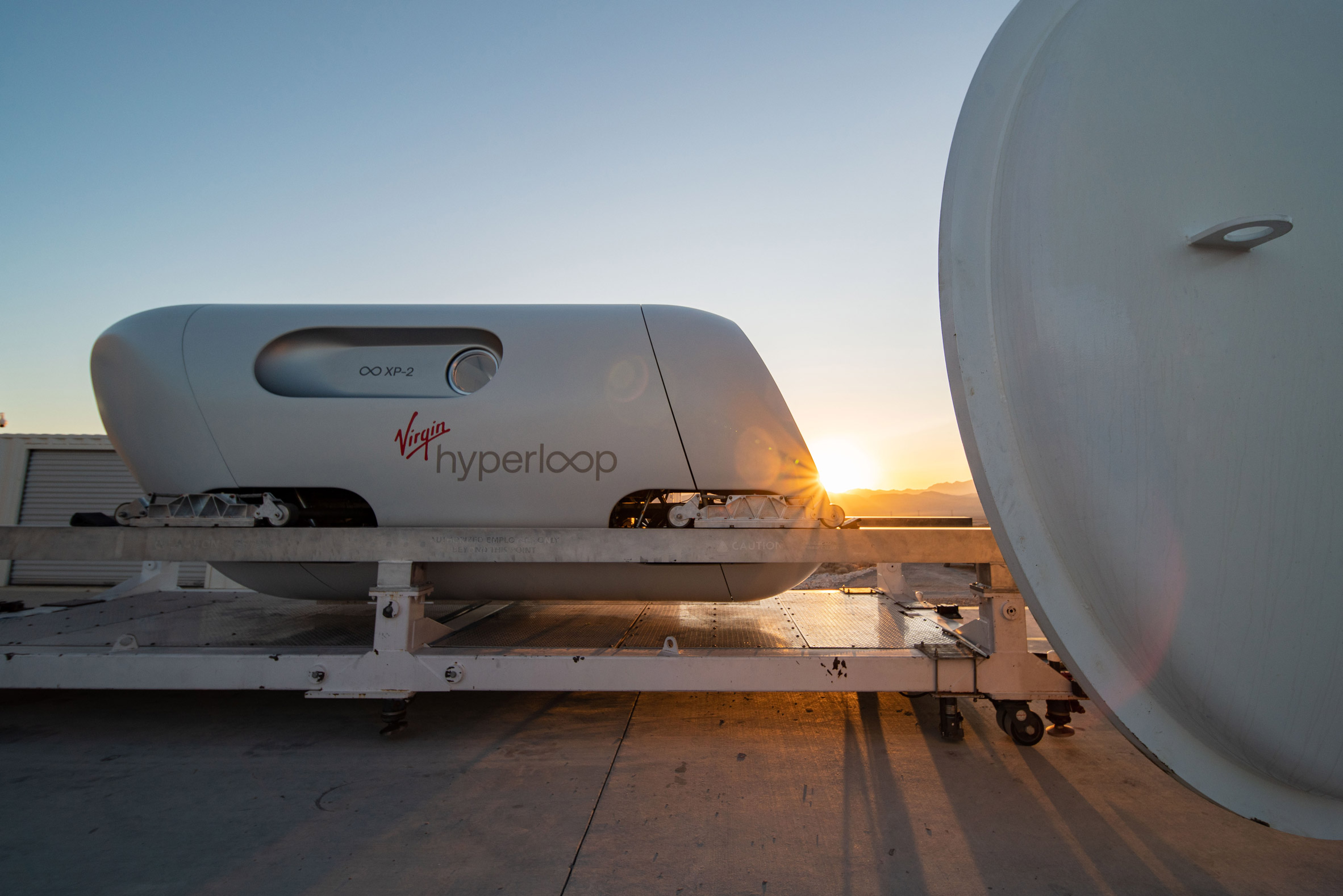
Elon Musk first unveiled the concept for hyperloop in 2013 and developed it through his company SpaceX. He then open-sourced the technology and is no longer directly involved in its development.
Virgin Hyperloop was founded in 2014 as Hyperloop Technologies, before changing its name to Hyperloop One in 2016 and then to Virgin Hyperloop One after being acquired by Richard Branson's company. It is now called Virgin Hyperloop.
The company's main competitor is Hyperloop Transportation Technologies, which unveiled a prototype of a full-scale hyperloop passenger capsule designed by Priestmangoode back in October 2018.
Last month, Virgin Hyperloop announced that it is building The Hyperloop Certification Center (HCC) facility in West Virginia. Also designed by BIG, the centre will include a six-mile-long tube for testing and certifying the high-speed transportation system.
The post First human passengers travel in BIG-designed Virgin Hyperloop pod appeared first on Dezeen.
from Dezeen https://ift.tt/3ne2FFt
No comments:
Post a Comment